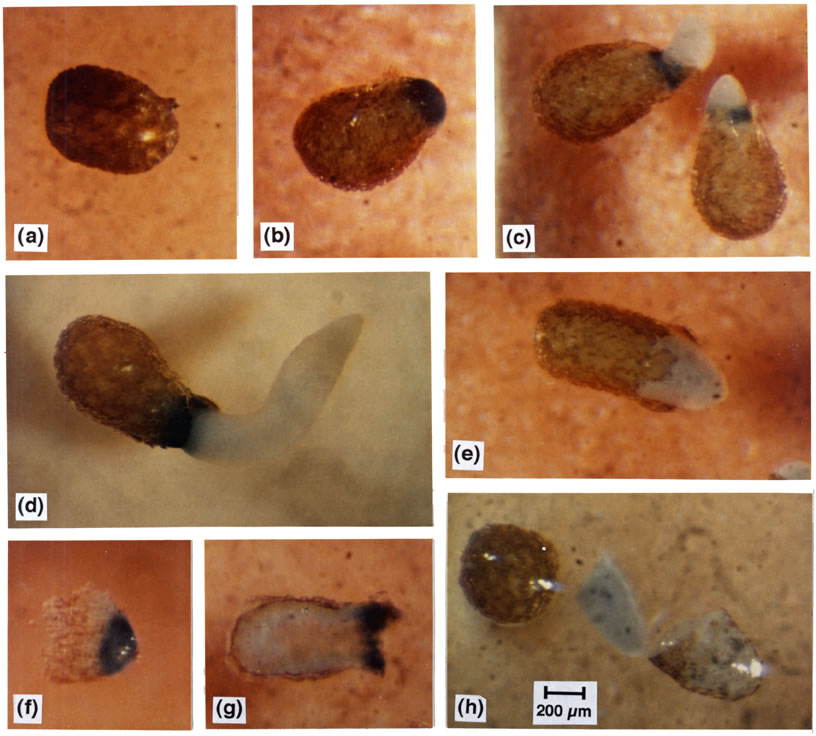Plant Physiology 109: 751-759 (1995)
Class I ß-1,3-glucanases in the endosperm of tobacco during
germination

Figure 2. Stages in the germination of tobacco seed homozygous for the GLB-GUS transgene. Seeds were germinated in continuous light at 24ºC with 10-5 M ABA (ABA) and without ABA (control) added to the medium. At the times indicated after the start of imbibition, seeds were stained for GUS activity. The blue staining is indicative of transcriptional activity of the class I ß-1,3-glucanase B promoter.
(a) Stage I (control, 3 h): intact seed prior to seed-coat rupture.
(b) Stage II (control, 60 h): seed with ruptured seed coat and protruding endosperm.
(c) Stage III (control, 72 h): seeds with ruptured endosperm showing GUS staining at the rupture site and emerging radicles, which do not stain for GUS.
(d) Stage III (control, 96 h): seed with ruptured endosperm and elongating radicle. GUS staining is localized in a collar of endosperm tissue at the site of radicle penetration.
(e) Stage II (ABA, 144 h): ABA treatment markedly delays endosperm rupture and results in a novel structure consisting of the enlarging radicle completely enclosed in a sheath of intact endosperm, which does not stain for GUS.
(f) Stage II (control, 60 h): endosperm dissected prior to rupture showing GUS stain localized in the micropylar region.
(g) Stage III (control, 96 h): endosperm dissected after rupture showing that the radicle penetrates the region which stains for GUS.
(h) Stage II (ABA, 144 h): a seed arrested in stage II by ABA treatment dissected to show that the elongated radicle is enclosed in a sheath of endosperm. Magnification: 40X.
| Article in PDF format (2.5 MB) | Abstract Fig. 1 Fig. 2 Fig. 3 Fig. 4 Fig. 5 Table 1 |
|
|
The Seed Biology Place
|
Webdesign Gerhard Leubner 2000
|